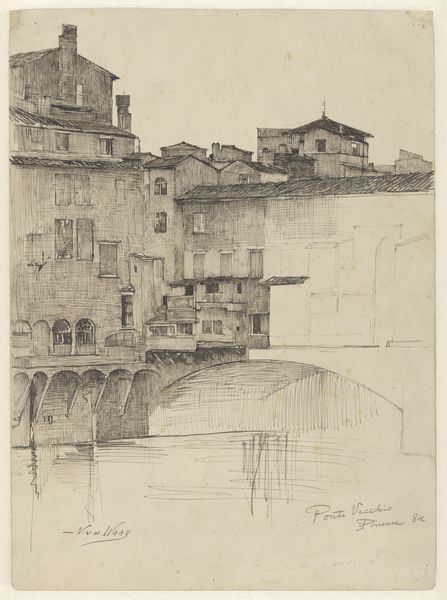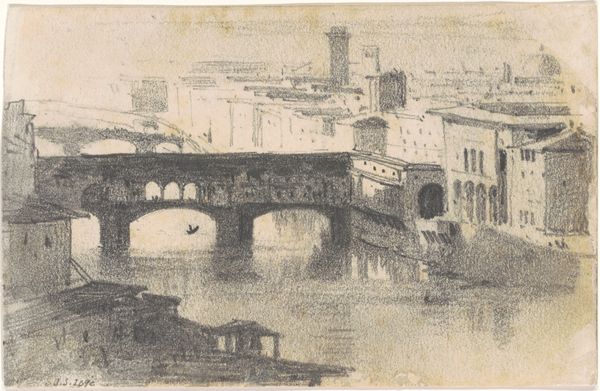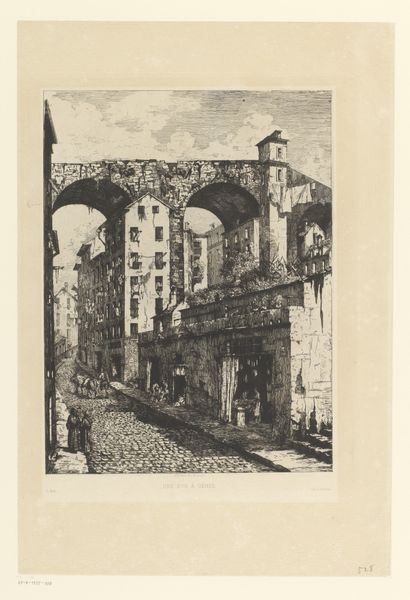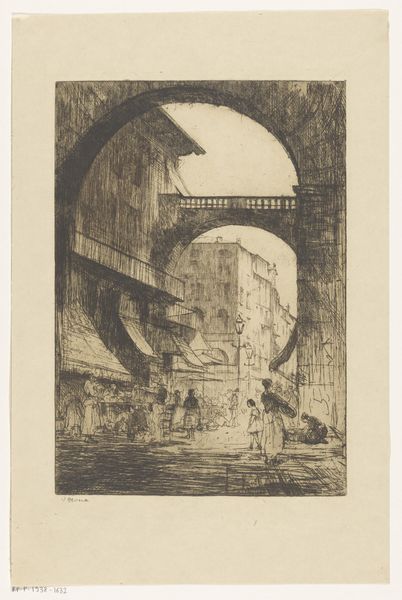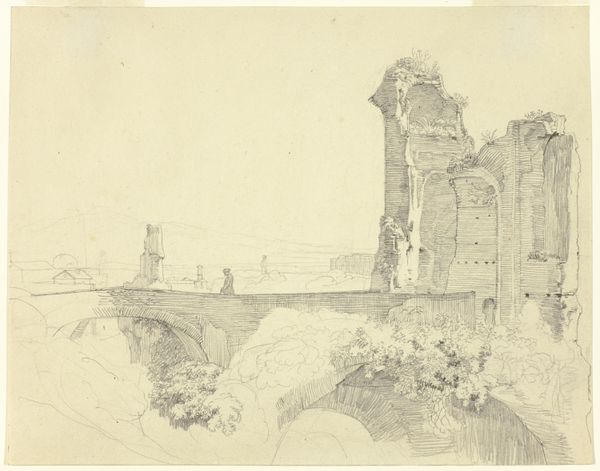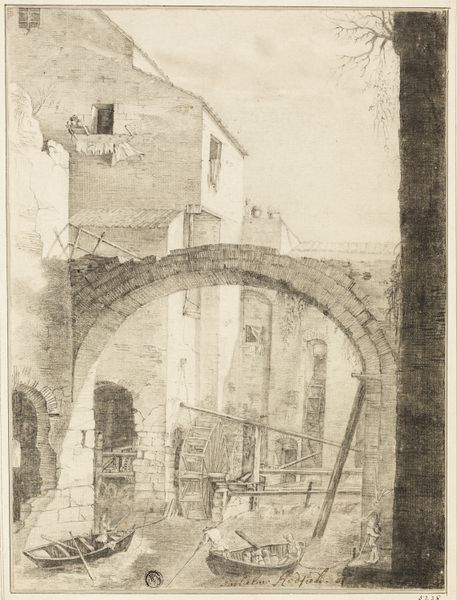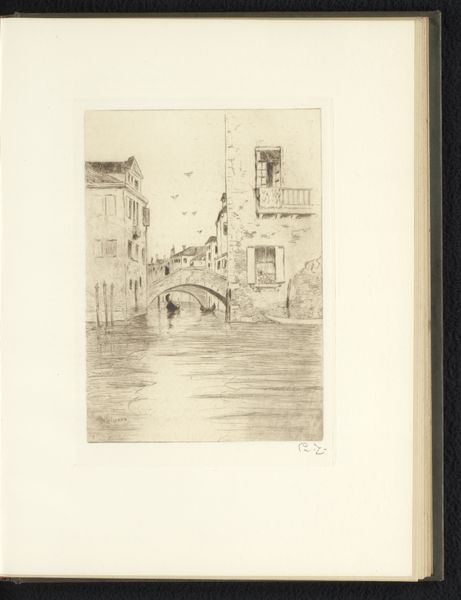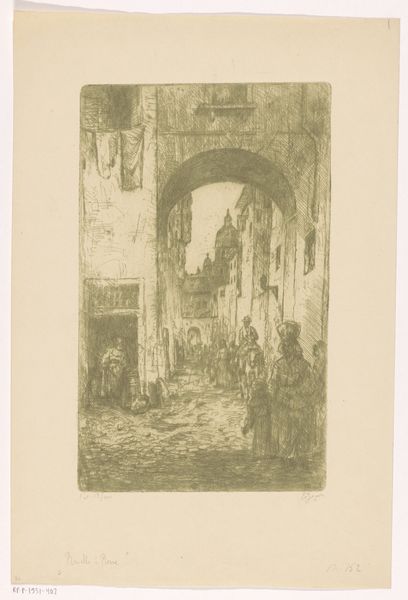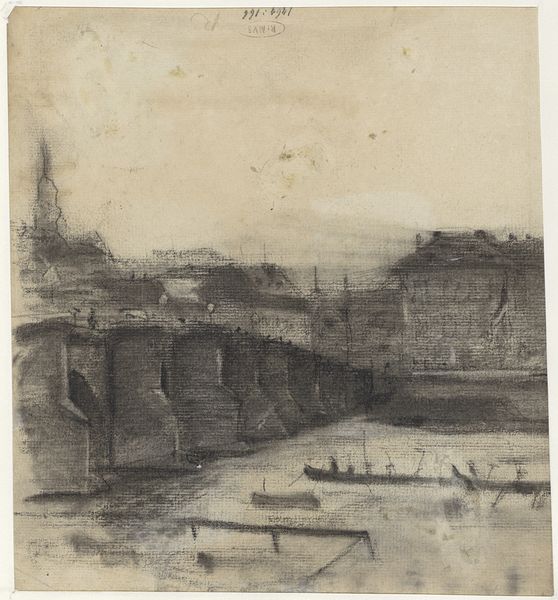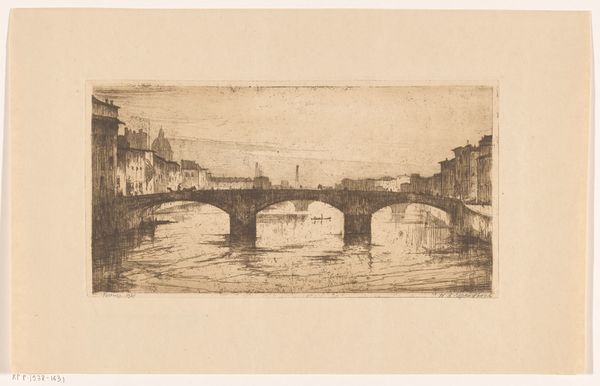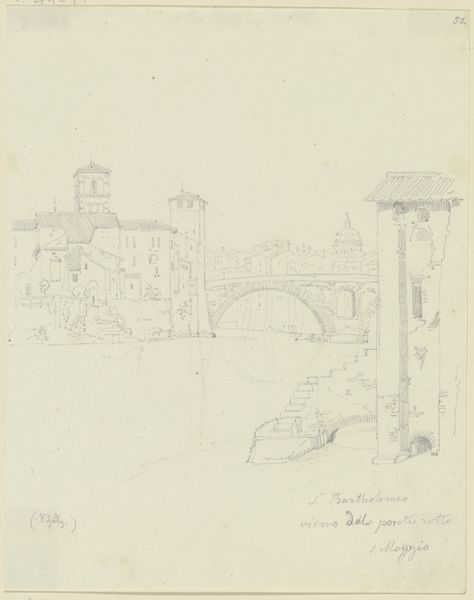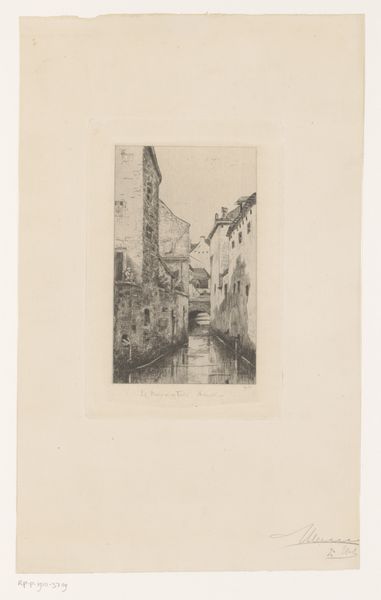
Dimensions: height 328 mm, width 220 mm
Copyright: Rijks Museum: Open Domain
Editor: We’re looking at “Verona,” an etching by Willem Adrianus Grondhout, created sometime between 1888 and 1934, now at the Rijksmuseum. It's a fairly small, detailed piece. The composition leads the eye to this weathered stone bridge and then upwards to the distant buildings. What do you see as most significant in terms of its formal elements? Curator: The structural integrity is compelling. Notice the artist’s use of line – a delicate but firm etching technique which provides the architectural detail. The artist also gives notable attention to texture through these varied and repeated lines, effectively simulating stone and reflecting light on the water. Do you perceive a particular balance or imbalance in the composition? Editor: I think the visual weight is heavier on the right side, with the darker reflections and the rectangular form at the water's edge. It almost feels unbalanced, like it could tip over. Curator: An astute observation. This asymmetry is, perhaps, intentional. It introduces a dynamic tension within an otherwise still scene. This compositional technique disrupts a perfectly stable scene, instead making a more arresting, asymmetrical balance. How might this relate to the romantic ideal often found in landscapes? Editor: I guess it deviates from perfect idealized forms? Makes it more, maybe, true to life and therefore more impactful? Curator: Precisely. It directs our gaze and imbues the seemingly static scene with a latent kineticism. Consider the bridge itself – it’s not merely a static structure, but an active form that guides our sight and shapes the interplay of light and shadow. It functions almost like a grid. Editor: So, it's not just *what* is depicted, but *how* it’s depicted that generates meaning? Curator: Indubitably. The essence resides not in the subject alone, but within the structural relationships and how these elements orchestrate our viewing experience. It all contributes to its artistic effect. Editor: I hadn’t considered that before. I appreciate how your focus on structure has shown me so much more. Thanks! Curator: My pleasure. Reflecting on artistic components deepens appreciation for creative ingenuity.
Comments
No comments
Be the first to comment and join the conversation on the ultimate creative platform.
